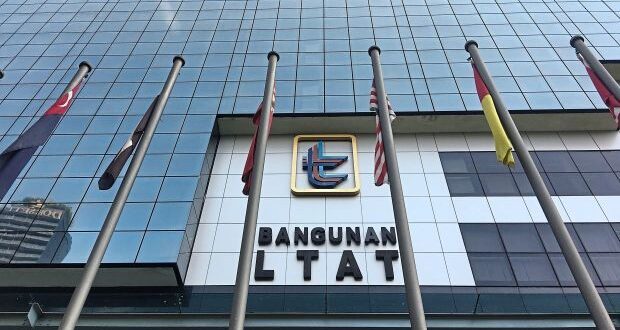THE EPF’s recent dividend announcement reinforces the suggestion in last week’s Star Biz7 issue to outsource the financial management of government-linked investment companies (GLICs) to the provident fund, which has proven to be an excellent and trustworthy steward of private sector retirement savings.
EPF’s track record speaks for itself, with an average payout of 5.95% for conventional savings over the 2014-2023 period, and 5.43% for syariah savings over 2017-2023. The dividend yield gap between conventional and syariah savings has narrowed as well.
In contrast, LTAT, the fund for armed forces personnel and its retirees, has seen its dividend payout rate decline from 15% in 2014 to 5% in 2022. More concerning is the volatility of these payouts, with a dividend payout of 2% in 2018, which is lower than the EPF minimum guaranteed payout of 2.5%.
LTAT has not declared a double-digit payout in percentage terms since 2014. The dividend for 2023 is likely to be known in the next two weeks.
Most of LTAT’s assets are held by Boustead Holdings Bhd, which needs to be restructured in order to ensure better payouts. The Auditor-General noted recently that LTAT was paying dividends from non-cash profits.
Lembaga Tabung Haji (LTH), the fund set up for Muslims to finance their hajj obligation, is another GLIC that can outsource its financial management to the EPF.
From 2020 to 2022, the dividend was 3.1%, but there have been a number of irregularities at the fund. Among them is paying members bonuses on top of dividends that exceed what the fund earned. This happened from 2014 to 2017.
In fact, its dividend payout for 2017 led to several police reports being made by the board of directors and management that took over in July 2018. This stemmed from incorrect financial statements.
Additionally, it does not have a sterling investment record, and in 2018, declared a dividend of 1.25%, compared to 5.9% for EPF’s syariah savings dividend.
Malaysia suffers from a glut of GLICs, so there may be compelling reasons why LTH money should be managed by EPF.
The provident fund has divided conventional from syariah strategic asset allocation frameworks since 2024, which makes it more flexible in management and returns maximisation. Muslim EPF members can use their Account 2 for the hajj.
Another idea is to create a “Malaysian superfund” separate from the EPF. Prof Geoffrey Williams from the Malaysia University of Science and Technology presented this in June 2022, and a paper on it was published in November that same year. His idea is much more ambitious as it involves bringing together all the GLICs except EPF.
The idea is to combine underperforming GLICs to create a fund that will deliver returns ringfenced for pensions and social protection, as in Norway and Japan, for example. Even Sarawak is developing this model and the peninsula can follow it,” Williams tells Star Biz7.
Based on the GLICs being merged, he reckons there could be anything from RM300bil to RM1.4 trillion in this superfund, and with a 5% to 6% return. This could cover part or even all of the pension costs for civil ser-vants while providing a universal basic pension for non-civil servants.
According to him, the most conservative framework would be to merge civil service pension scheme manager KWAP, sovereign wealth fund Khazanah Nasional Bhd, the infrastructure trust fund KWAN and LTAT, then rebuild their strategic asset allocation to support economic development and investment, but use the returns for pensions.
“A more ambitious scheme would include other sources such as PNB, Socso, Petronas income, privatisation proceeds, the development finance institutions (DFIs) and even dormant funds held by Bank Negara Malaysia.
“This Malaysian superfund will be of similar size to EPF but independent of EPF. It would give a similar investment return of RM60bil to RM70bil a year based on the last EPF results,” he says.
While the idea is sound, it may not resonate with the various stakeholders in the government, as the GLICs and DFIs have different mandates.
There is also the “small” matter of politics, as these organisations come under different ministries. Control over these funds gives politicians appointed as ministers power.
Williams says a comprehensive study on the superfund is crucial to ensure members’ interests are protected, including those of investee companies.
“Corporate governance issues must also be addressed to prevent another 1MDB,” he says, adding that the smaller GLICs are underperforming because of their fund size.
“We also have millions of people without any pensions and no real chance of saving enough for retirement because of low incomes or being outside the labour force.
“A Malaysian superfund would give a universal basic pension to everyone funded by investment returns. Those with existing pensions would also benefit,” Williams says.
This article first appeared in Star Biz7 weekly edition.
 BeritaKini.biz Berita Viral Terkini di Malaysia
BeritaKini.biz Berita Viral Terkini di Malaysia





